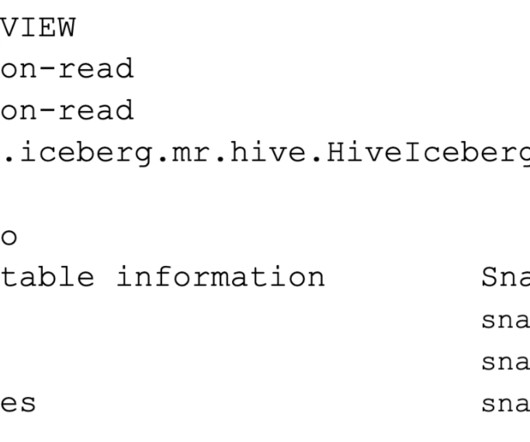Materialized Views in Hive for Iceberg Table Format
Cloudera
FEBRUARY 8, 2024
Queries containing joins, filters, projections, group-by, or aggregations without group-by can be transparently rewritten by the Hive optimizer to use one or more eligible materialized views. Materialized views can be partitioned on one or more columns. This can potentially lead to orders of magnitude improvement in performance.














Let's personalize your content